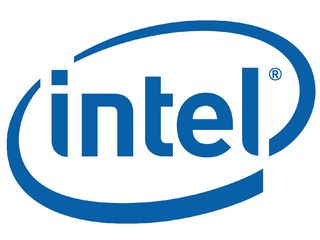Intel Joins Board of Alliance for Wireless Power
Intel believes the A4WP's method is the way to go for wireless charging of devices.

Intel has chosen its side in the wireless power market (pdf), and it's the Alliance for Wireless Power (A4WP) which was founded by Samsung and Qualcomm. This alliance, which claims to have over 50 members including Broadcom, LG Electronics, SanDisk and more, is competing with the Wireless Power Consortium (WPC) and Power Matters Alliance (PMA) to set the standard for the nascent wireless charging market.
A4WP's method uses near-field magnetic resonance technology, and is capable of enabling the simultaneous charging of multiple devices and the flexible positioning of devices on a charging pad or similar devices "at power levels and charging times that meet consumer expectations". Devices can charge up to 1.5 inches away, thus tablet or smartphone can be charged when placed next to a laptop sporting resonance charging capabilities without having to be seated directly on a charging platform.
The competing WPC supports the widely adopted Qi inductive power standard. It requires that a compatible device charge on a surface area of at least 70-mm by 20-mm via magnetic induction. This method doesn't require a wired connection, but rather a transmitter coil and a receiver coil to transmit power. A magnetic field that's generated by alternating current in the transmitter actually induces a voltage in the receiver coil.
The PMA's Power 2.0 specification is defined as "a multifaceted interface standard describing analog power transfer (inductive and resonant), digital transceiver communication, cloud based power management, and environmental sustainability." Its suite of standards is based on inductive coupling technology to provide advanced inductive and resonant power. PMA members include Broadcom, Huawei, LG Electronics, Mediatek, Samsung, Sharp and others.
For A4WP, Intel is joining existing board member companies Broadcom, Gill Industries, Integrated Device Technology (IDT), Qualcomm, Samsung Electronics, and Samsung Electro-Mechanics. Given that a number of these companies are also dipping their toes into the other two standards, it's probably safe to say that Intel is just now joining the name-that-standards game rather than "choosing sides". Samsung and the like seem to be working to deliver the best solution to customers whether it's through A4WP or PMA.
However Navin Shenoy, vice president of Intel's PC client group and the general manager of its mobile client platform division, seems pretty fond of what A4WP has to offer.
"Intel believes the A4WP specification, particularly the use of near-field magnetic resonance technology, can provide a compelling consumer experience and enable new usage models that make device charging almost automatic," he said. "In joining A4WP, we look forward to working alongside other member companies and contributing to standards that help fuel an ecosystem of innovative solutions capable of simultaneously charging a range of devices, from low-power accessories to smartphones, tablets and Ultrabooks."
Stay on the Cutting Edge
Join the experts who read Tom's Hardware for the inside track on enthusiast PC tech news — and have for over 25 years. We'll send breaking news and in-depth reviews of CPUs, GPUs, AI, maker hardware and more straight to your inbox.
The A4WP said that its overall vision is that of ubiquitous power based on non-radiative. Near-field magnetic resonance wireless power transfer.
-
InvalidError Resonant charging is simply a special case of inductive where the receiving circuit is made of a tuned LC circuit instead of just a coil.Reply
Parallel LC resonant circuits have a voltage gain characteristic that could be fairly useful for picking up power (albeit less of it) over longer distances. -
devBunny Does anyone know which of the methods is most efficient, and which, when these technologies are fully mature, is likely to then be the most efficient? Whatever the answer, that's the standard that I wish to see prevail.Reply -
InvalidError None of these will be particularly efficient unless the device is sitting directly on the transmitter with both the transmitting and receiving coils lined up.Reply
But because the TX coil will likely be much larger than the RX coil (needs to be if you want to put multiple devices on the same charger without having to worry about lining them up perfectly), only a fraction of transmitted power will ever cross a receiving loop and the rest will be lost even at point-blank range. Once you start putting distance between the pad and device, you quickly get in the far-field where free-space dispersion will increase losses proportionally with d^2 which makes wireless power at "long" ranges woefully inefficient even on a good day unless you use highly directional antennas but that would ruin the convenience argument for wireless charging in the first place.
I'm betting one of the inductive schemes will win since it is much simpler and cheaper: simply drive one or more simple coils with simple inverters (which coils/inverters are being driven may change depending on where loads are located on the pad to minimize waste) and use a simple coil with rectifier bridge on devices to power them.
With resonant, you have the same fundamental building blocks as inductive with the added burden of managing each device's capacitive/inductive load to keep the near-field's overall LC load and resonant frequency roughly constant, which calls for coils and capacitor banks with multiple taps and a management layer to negotiate LC configuration across all devices within the charging field.
Resonant circuits are nice for picking weak signal sources over narrow bands but when the primary application is practically direct contact with the charging pad, its sensitivity (and associated complexity) is unnecessary.
Most Popular

